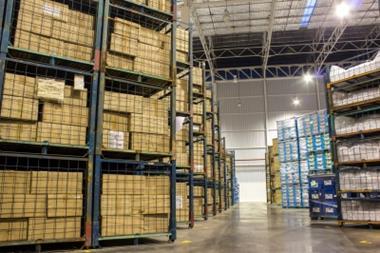Construction risk managers should be aware of the changes because they create new obligations for clients, designers and contractors

The Construction (Design and Management) Regulations 2015 (CDMR) came into force on 6 April 2015, replacing the 2007 regulations. Risk managers working in the construction industry should be aware of the changes because they create new obligations for clients, designers and contractors, who risk unlimited fines and even imprisonment if they fail to comply, as well as the inevitable adverse publicity.
What is their primary aim?
- to put a greater onus on the clients to think earlier about health and safety matters on construction projects; and
- to encourage those with design responsibility to take better ownership of health and safety matters when schemes are first conceived; to inextricably link the CDM 2015 in the design process. This aims to solve the concerns about the CDM 2007 whereby CDM co-ordinators were often perceived as peripheral with limited impact on design decisions, particularly at an early stage of the design process.
When do they apply?
Activities
The CDMR apply to the carrying out of any building, civil engineering or engineering construction work.
The included activities are extremely broad and even include redecoration and high-pressure cleaning. However, site surveys, pre-construction archaeological investigations, and the exploration for, or extraction of, mineral resources, or preparatory activities carried out at a place where such exploration or extraction is carried out, are expressly excluded.
Timing
The regulations apply to all projects commenced after 6 April 2015.For projects commenced before 6 April transitional provisions are in place until 6 October 2015.
What are the penalties for non-compliance?
Non-compliance is a criminal offence punishable with unlimited fines and, for
individuals, imprisonment.
What are the key changes?
Client
The client is now anyone who has construction work carried out for them. The CDMR recognise two types of client:
- commercial clients: have construction work carried out as part of their business; and
- domestic clients: have construction work carried out for them but not in connection with any business.
The client now has broad duties. It is obliged to:
- provide pre-construction information to every designer and contractor appointed or being considered for appointment;
- notify the HSE/Office of Rail Regulation/Office for Nuclear Regulation (the latter two applying instead of the HSE in the case of rail projects or nuclear work respectively) of a project if either construction work is scheduled to last longer than 30 working days and have more than 20 workers on site at any point, or if construction work is scheduled to exceed 500 person days;
- before construction begins, ensure that the principal contractor prepares a construction phase plan; and
- ensure that the principal designer prepares a compliant health and safety file that is revised as and when needed and that is available for inspection.
In addition, there is a broad duty on clients to “take reasonable steps” to ensure that the principal designer and the principal contractor comply with the remainder of their duties.
However, for domestic clients, most client duties are passed to other duty-holders.
Role of the principal contractor
A principal contractor must be appointed where there is more than one contractor. As this includes subcontractors, this is likely to be necessary on the majority of projects.
A principal contractor must:
- not accept the role of principal contractor unless it has the skills, knowledge, experience and organisational capability to carry out the role;
- prepare the construction phase plan before setting up site, and review, update and revise the construction phase plan from time to time as the project progresses;
- pass any information in its possession that is relevant to the health and safety file to the principal designer and, if the principal designer’s appointment concludes before the end of the project, receive the health and safety file from the principal designer and review, update and revise it from time to time as the project progresses and pass it to the client at the end of the project; and
- satisfy a broad range of other health and safety responsibilities from ensuring a suitable site induction is provided, to consulting workers to check the effectiveness of health and safety policy, to co-ordinating implementation by the contractors of applicable legal requirements for health and safety.
Role of the principal designer
The role of principal designer has replaced that of the CDM co-ordinator. Its role also extends to CDM compliance during the design phase and it must therefore have design competence.
The principal designer must:
- not accept the role of principal designer unless it has the skills, knowledge, experience and organisational capability to carry out the role;
- prepare the health and safety file in the pre-construction phase, and review, update and revise the health and safety file from time to time as the project progresses (and pass to the client at the end of the project or, where the principal designer’s appointment concludes before the end of the project, pass to the principal contractor);
- plan, manage and monitor the pre-construction phase (taking into account the ‘principles of prevention’ (see Appendix 1 of the HSE CDM 2015 guidance), the construction phase plan, and the health and safety file);
- ensure that designers comply with their CDM 2015 duties (including that their design takes into account the ‘principles of prevention’ and the pre-construction information);
- liaise with, and share information with, the principal contractor for the duration of the principal designer’s appointment; and
- satisfy a broad range of other health and safety responsibilities from ensuring co-operation between the client, principal designer, and others working on the project, to assisting the client in providing pre-construction information to every designer and contractor appointed or being considered for appointment pre-construction.
Challenges ahead
Commercial clients, principal designers and principal contractors have extensive obligations under CDMR 2015.
The challenge for those in the construction industry will be in ensuring that they have the skills, knowledge, experience and organisational capability to fill these roles This is likely to require training and the introduction of new procedures and working practices.
Those commercial clients who have previously had little experience of the construction industry will be particularly at risk and should therefore consider seeking external advice on how to meet their obligations under CDMR 2015. Misunderstanding or being unaware of the regulations is not a defence and could have dire consequences..
Jonathan Anslow is a partner at Hill Dickinson




















No comments yet